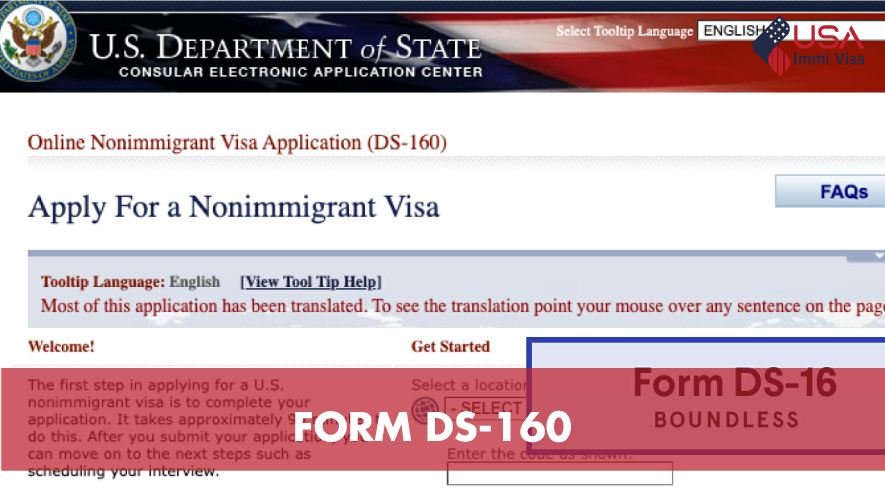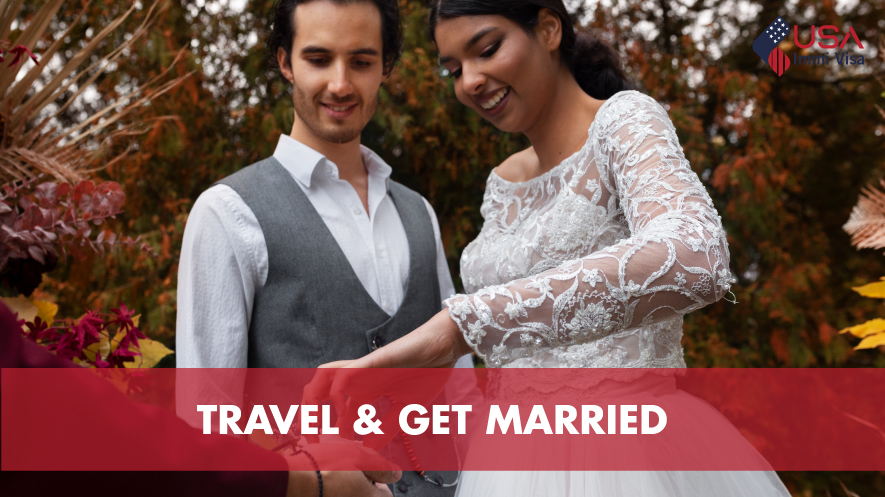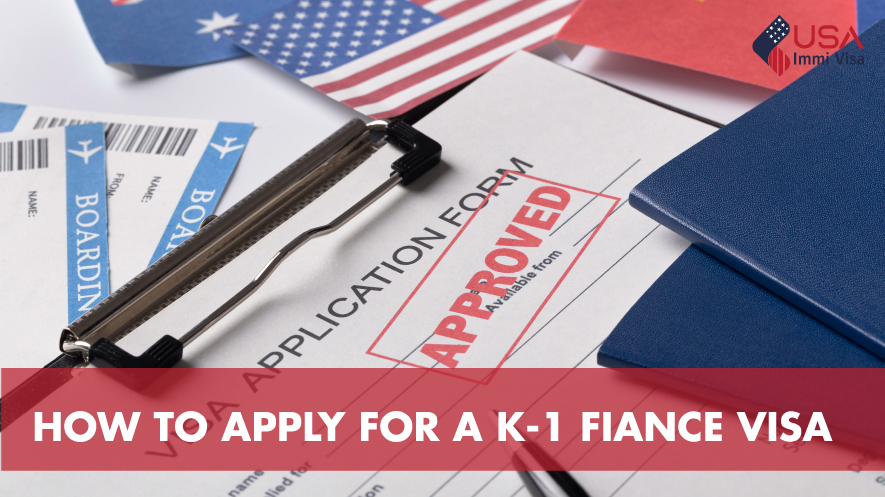The K-1 fiance(e) visa is one of the easiest types of visas to sponsor. However, it’s important to understand the process and how it differs from other visas.
To start, the sponsored partner must meet certain income requirements and undergo a medical examination. Then, the couple must schedule and attend their interview at a US Embassy or Consulate.
Form DS-160
Once USCIS approves your I-129F fiance petition, you will need to fill out Form DS-160 online. This form asks you to provide basic information about your fiance(e) and yourself. It also requires details about your travel plans and any other pertinent information. You will also need to submit documents proving your financial support and health insurance coverage.
When filling out DS-160, be sure to answer all of the questions truthfully and completely. If you can’t provide an answer to a question, write “None” or “Not Applicable” in the space provided. It’s also important to remember that once you submit DS-160, you can’t go back and change your answers. If you wish to modify any part of your application, you must submit a new DS-160 with different information.
After providing your basic information, you will be asked to select the location of the interview at which you would like to appear. Keep in mind that your visa interview can take place at a different location than the one you originally selected. If you wish to change the interview location, you must first cancel your original appointment and re-register at the new location.
You will also be given a unique application ID and a security question and answer. Write these down and keep them safe; they will be needed if you need to retrieve your DS-160 form at a later date. You’ll also need to choose a security question and answer that you will be able to remember; this will serve as your password for logging in to the Consular Electronic Application Center at any time in the future.
Some parts of the DS-160 are optional, but it’s important to fill out all of the required sections. You will need to provide answers about your current and previous employment, any criminal record you may have, any past trips to the United States and any other relevant information. You will also need to provide a list of any social media accounts you have used in the past five years; immigration officials now check applicants’ social media activity while reviewing applications.

Visa Interview
After the National Visa Center (NVC) receives all your forms and supporting documents, they will schedule your interview date with the consulate. You will be given a specific time to attend the interview, and it is extremely important that you make it on time as arriving late could delay your approval.
On the day of your interview, you will have to arrive at the Embassy/Consulate and go through a security check which will include a full body metal detector scan. Once inside, you will be directed to a waiting lounge and must remain there until your name is called. When your name is called, you will be asked to come to a window where an interviewer will be behind a glass window. You will be able to communicate with the interviewer through a microphone on the window and a slot below the window where you can exchange documents.
You will be asked questions that are aimed at finding out why you want to move to the United States and what your plans are once you’re there. It’s important to answer all of the questions truthfully and thoroughly so that the interviewer can have a clear picture of your situation and visa intentions. It’s also a good idea to practice your English conversation with a native speaker in order to be more confident during the interview.
One of the most common questions is where you will be staying in the US, and it’s a good idea to bring up to date travel arrangements with your fiance(e). You should also be prepared to show proof of your relationship as well as any other relevant documentation that may help you during your interview. It is also a good idea to have with you any supporting documents that prove your financial status as this will be a key factor in the process of determining whether or not you’ll be granted the visa. For example, any financial documentation pertaining to your educational pursuits should be included, as well as letter from your university stating that you’ll be studying there.
Medical Examination
To prove that you don’t have a medical condition that could make you inadmissible to the United States, you must undergo a medical examination. This is done by an authorized physician who is either a civil surgeon in the United States or a panel physician abroad.
The exam consists of a general checkup and a vaccination review. The doctor will follow the CDC’s Technical Instructions for Civil Surgeons, which currently require them to test all green card applicants aged 2 and older with an interferon-gamma release assay (IGRA) to determine whether you have tuberculosis.
It’s a good idea to schedule the medical exam far in advance of your interview at your country’s embassy or consulate. By doing so, you’ll be less likely to receive a Request for Evidence (RFE) after the interview, since your exam results will remain valid indefinitely. If you’re concerned about scheduling too early, you can ask the NVC to delay your appointment until after you receive your interview date, but this will increase the waiting time and uncertainty of when your visa will be issued.
After the medical exam, you’ll attend a visa interview at your country’s U.S. embassy or consulate. During the interview, the officer will examine your documentation and ask you questions to determine whether you are eligible for a K-1 visa.
If you have children, they can apply for K-2 visas based on the approval of your Form I-129F, Petition for Alien Fiance(e). However, they must travel with (accompany) or follow to join you later (follow-to-join) within one year of your arrival in the United States, as their visas will expire.
To sponsor a K-1 visa, you must demonstrate that your income meets or exceeds 100% of the current Federal Poverty Guidelines. This income requirement changes over time, so you should always check the latest guidelines before filing your petition. Boundless can help you ensure that your petition meets all the requirements, so get started today! Our immigration attorneys have helped over 100,000 people, and we guarantee our work or your money back.
Travel & Get Married
Known as the K1 visa, this non-immigrant visa allows the foreign fiance of a U.S citizen to travel to the United States to marry their sponsor and then seek a permanent residency green card. To obtain a K-1 visa, the sponsoring U.S citizen must file a petition for their fiance before the latter can travel to the United States. After a successful interview at a US Consulate or Embassy, the sponsored fiance is allowed to enter the United States for 90 days to get married and then apply for a marriage-based green card.
The process of obtaining a K1 visa is complex, and the sponsored fiance must have all the necessary documents prepared before attending their visa interview. This includes a completed DS-160, a medical exam from a government-approved doctor, and police clearance from every country they’ve ever lived in. It’s also crucial that the couple convinces the consular officer that their relationship is genuine and that they will get married within 90 days of their arrival in the United States.
To prove that their relationship is real, the couple must submit evidence of their bond, such as pictures together, flight itineraries from trips they’ve taken, letters from family members confirming their relationship, emails and text messages, and more. Moreover, each partner must sign a sworn statement that they are in a legitimate marriage and that they’ll get married in the United States within 90 days of the fiance’s entry to the country.
The most common path for a U.S. citizen and their fiance to become permanent residents is for the couple to marry abroad, wait until the spouse becomes a permanent resident, then petition for them as a married couple through Form I-130. However, this option has its risks because immigration officers may suspect that the couple has entered the United States solely to marry and then adjust their status. This is why it’s important to have a trusted attorney by your side. At Urbina Immigration Law, we can help you through the entire fiance visa process and defend your rights to be with the person you love.


